The birth of the Soviet missile defense system. Mechanical brains
All these events are closely related to two outstanding people. Both were scientists, electrical engineers and inventors, both founded the most powerful companies still in existence and became millionaires, both helped to win the war. One of them was Elmer Ambrose Sperry, the other was Vannevar Bush.
Of the problems facing the creators of the cybernetic system - the perfect air defense weapon: a radar, a radio fuse and a ballistic computer, Vannevar Bush was responsible for two - for everything related to radars.
Sperry was the real pioneer of automatic control systems. The resulting scheme not only served as a conceptual prototype for all developments related to missile defense, but also led to a colossal impetus in the development of computers (as well as in the development of American business).
Sperry was one of the titans of the outgoing XNUMXth century - a typical Zhulvern engineer, who understood everything: from mining equipment to his invented process of obtaining pure caustic soda and technologies for extracting tin from scrap metal. In addition, his inquiring mind continually turned to more and more new problems.
Back in 1887, he created a coal mine electrification system that brought his own mining equipment deep underground to dramatically increase coal production, and founded the Sperry Electric Machinery Mining Company.
In 1890, he used his ideas for underground electric carriages to develop trolley buses that entered the large hilly cities of Ohio and Pennsylvania, founding the Sperry Electric Railway Company. He also created one of the first electric vehicles and developed the technology of the portable lead-acid battery that is still in use today.
Sperry's car was shown at the World Exhibition in Paris and during the trip suffered the torment of seasickness. As a result, his attention was drawn to the problems of gyroscopic stabilization, and then inertial navigation. In 1910, he creates his most famous company, the Sperry Gyroscope Company, and wins a tender for the supply of gyro stabilizers, which radically reduce the pitching of ships, to the US Navy.
At the same time, he meets another talented engineer, about whom information cannot be found in Russian at all - Hannibal Choate Ford.
Hannibal Ford
Ford was born in the state of New York and from childhood was fond of mechanical watches. Before university, he worked for the Crandall Typewriter Company, Daugherty Typewriter Company and even Westinghouse Electric, and after graduating in 1903 from Cornwall University, he got a job at the JG White Company in New York, developing speed regulators and control systems for the New York subway. Finally, in 1909, he merged with Sperry and worked for his company until 1915.
Working with Ford, Sperry created the world's first gyrocompass to replace the unreliable magnetic compasses of the time in steel battleships. Its first system was installed on the USS Delaware in 1910. Delaware was sent to the coronation of George V, where he made a tremendous impression on the very respectful of naval technology in the British.
According to the test results, the system was supplemented with repeater compasses and target bearing indicators, and Admiral Joseph Strauss, chief of the US Navy's Main Armaments Directorate, ordered Sperry to install such a system on all American dreadnoughts during the First World War.
In the same years, the Sperry Metal Mike appeared - the first gyroscopic system for maintaining the course of the ship (the Sperry aircraft autopilot of 1933 was called the Mechanical Mike).
The influence of the Sperry Gyroscope Company was enormous, branches were created in Great Britain, gyrocompasses were purchased not only by the American, but also by the British, Italian, French and (a couple of pieces) even by the Russian fleets. The Germans, by the way, used similar devices developed by Hermann Franz Joseph Hubertus Maria Anschütz-Kaempfe.
Production of the Sperry gyrocompasses continued in the UK until the late 1970s, when the company was sold to British Aerospace.
Combining the idea of a gyrocompass, gyro stabilization and rudders, in 1916 Sperry creates the world's first autopilot and tests unmanned aerial vehicles. Alas, at that time such technologies were still practically unrealizable in such a small volume, but the system of automatic maintenance and stabilization of the course for ships turned out great.
As a result, American dreadnoughts of that time became the most technically advanced ships in the world, even ahead of Britain.
The ideas of telemechanics and automatic control captured him for life.
Sperry, continuing to work on a full aviation autopilot (and creating it), made in 1918 the first "air torpedo", as the missiles were then called, and guided! He developed bombsights, radar-based fire control systems and landing computers.
During World War II, Sperry Gyroscope created the anti-aircraft turrets of the Boeing B-1942 Flying Fortress bombers in 17, true masterpieces of electrical engineering that significantly reduced American aircraft losses on all fronts. Later, they partnered with General Electric to design an even more efficient remote control turret for the B-29 Superfortress, the Remote Control Turret System, which turned the best bomber of World War II into a real death machine.
Sperry's colossal merit is that he was the first in the world to fully understand the general principles of feedback and automatic control and embodied them in universal electromechanical modules suitable for the most diverse use - from torpedoes to anti-aircraft guns. Sperry Gyroscope has specialized in the production of such devices for decades, effectively becoming the monopoly of inertial guidance and piloting systems.
David A. Mindell, in his book Between Human and Machine: Feedback, Control, and Computing before Cybernetics, wrote that Sperry, inventing and selling the world's first feedback devices,
Due to the escalation of conflict, the demand for robots for the war, it took off like an avalanche, Sperry did not have time to fulfill orders, Ford Motor Company and Chrysler plants had to be connected as subcontractors. In 1942 alone, Sperry signed contracts for the production of control systems for a billion dollars! In the era of machines, man was not fit for war.
Now we have to deal with the differential analyzers used to calculate the parameters of the shooting.
This class of machines dates back to the works of Gaspard-Gustave Coriolis, a famous mechanic, who discovered Coriolis forces in 1836 and James Thomson, his younger brother, the famous physicist, Lord Kelvin, in 1876. Lord Kelvin used the analyzer to isolate numerous factors affecting ebb and flow so that they could be predicted in the future.
Royal the fleet liked Kelvin's computer because it allowed historical tide data recorded anywhere in the world, and compile tables, spending a negligible fraction of the work that was previously required for calculations.
More than half a century later, Kelvin's tidal computers helped plan the Normandy landings, thereby directly contributing to the outcome of World War II.
On Lord Kelvin's advice, Thomson's integrating machine was later incorporated into the fire control system for naval artillery developed by Arthur Joseph Hungerford Pollen. Its Argo Clock was completed by 1912.
In general, the British held the palm in ballistic computers from 1904, when the Royal Navy was already developing a theoretical concept for coordinating salvoes from several ships to increase fire efficiency, until the end of the First World War.
These ideas were embodied in the Battle of Tsushima, and yes, the British were not at all on the side of Russia in it.
British military adviser Walter Hugh Thring of the Navy Gunnery Division (and he was not alone) was sent to help the Japanese reorganize their battleship control posts in accordance with the latest advances in science and technology. Tring brought the Japanese a Dumaresq, a mechanical computing device (essentially an analog model of the relative motion of two ships) invented around 1902 by Royal Navy Lieutenant John Saumarez Dumaresq, used with a rangefinder to calculate the proper aiming angles of guns. depending on the speed of the ship and the distance to the target.
Mark I Dumaresq was manufactured by Elliott Brothers. By 1913, the Royal Navy had purchased about 1 instruments of various modifications (I, II and III) worth £ 000. The Mark IV became electric and integrated into the so-called Dreyer Fire Control Table, designed by Admiral Sir Frederic Charles Dreyer, and became the pinnacle of dreadnought fire control technology in World War I.
An advanced version of Dreyer's table, into which Argo Clock was already integrated, was the Admiralty Fire Control Table (AFCT, used in various modifications up to the King George V-class battleships of World War II). The last dumaresque models were the simplified Mark VIII - Mark XII, which were not suitable for integration with modern fire control devices and were used until the end of World War II on auxiliary ships.
It was the Dumaresque Mark I, along with the Barr & Stroud Tring rangefinders, that helped the Imperial Japanese Navy to explore. In general, there is an excellent series of articles about Tsushima and about Russian and Japanese fire at VO, for example, this.
In the Russian Empire, similar systems were developed by Nikolai Karlovich Geisler, inventor, owner of the Electromechanical Plant NK Geisler and Co. Later, on the first Russian battleships of the Sevastopol class, commissioned in 1915, the GK SUAO included instruments of the Geisler system mod. 1910 and reworked on the basis of the Argo Clock and the automatic heading angle and distance, developed in 1912 by A.N.Krylov, TsAS designed by Nikolai Alexandrovich Fedoritsky.
In general, all these designs were extremely primitive, and full automation (minus the corrections for wind strength, which were entered manually), was achieved only by the British with their Dreyer table (a detailed analysis of all systems can be found here).
The difficulty of shooting at sea (and now imagine what it was like to develop anti-aircraft guns, taking into account the difference in size, speed and maneuverability of the ship and the aircraft) is best evidenced by the fact that during the Battle of Jutland, although the British had the best control system fire in the world at that time, only 3% of their shots hit their targets.
The Americans approached the problem in a more fundamental way.
After the First World War, they really thought about the significant improvement of the fleet, the development of fire control devices was in full swing, and the maximum contribution to this was made by the already mentioned Hannibal Ford. In 1915, he left Sperry to start his own company, the Ford Marine Appliance Corporation (later the Ford Instrument Company, after the war, absorbed by Sperry).
Already in 1917, he introduced his first product, the Ford Range Keeper Mk. 1, a rangefinder-based fire control system - a technique of the same class as the Argo Clock. Installed on the USS Texas Mk. 1 calculated for those times an amazing number of continuous functions in real time: he determined the velocity vector, by integrating this vector, he determined the range to the target and calculated the relative speed at right angles to the line of sight. The most valuable component of the Mk. 1 was a new type of integrator invented by Ford, extremely technologically advanced and reliable, later it was his design that formed the basis of all cars of this class.
By the end of World War I, the British and Yankees were the only ones with such advanced fire control systems.
The Washington Naval Treaty of 1922 suspended the development of the fleet for almost a decade, Ford's company was poor, but continued to conduct research. In the late 1920s, Ford began developing the world's first anti-aircraft computer and quickly realized that the problem was much more complex than firing at enemy ships. A decade later, by the end of the 1930s, Vickers (for example, Vickers No.1 Mk III) and Sperry created PUAZO against high-altitude bombers, but low-flying aircraft presented a completely different problem - too high angular velocity and short fire contact time.
Major Kerrison (AV Kerrison) from the Admiralty Research Laboratory in Teddington developed the first version of PUAZO that solves this problem - the Kerrison Predictor (produced in the USA as the M5 Antiaircraft Director). The device turned out to be capable of striking anything that flies in a straight line, and was especially effective against dive bombers. However, it also included over 1 precision parts and weighed over 000 kg, despite the fact that most of it was made of aluminum. Given the RAF's need for aluminum, the Predictor proved too complex to be mass produced. The set with the device also included a diesel generator for its operation, which made its use even more difficult.
Sperry created an analogue of this device a little earlier, faster and more accurate (and even more complex and expensive, 11 parts, more than 000 kg weight) M400 Computing Sight, nevertheless Kerrison No.7 was massively used by the US Army.
Ford also continued research in the field of ballistic computers, and their crowning was the Ford Mark 37 Gun Fire Control System with a ballistic computer Ford Mark 1A Fire Control Computer to combat aircraft (the world's best naval air defense system during the Second World War) and the Ford Rangekeeper Mark 8 - the pinnacle of large naval artillery fire control systems.
This system was used on the Iowa-class battleships and operated the 16-inch guns of all four ships from their commissioning during World War II until the bombing of Iraqi forces in February 1991 during the Gulf War.
The last upgrade of the system, commissioned during the Korean War, was the Mark 48, a computer for attacking the coast and conducting indirect fire at target designation from a reconnaissance aircraft, own drone battleship (since the late 1980s) or satellite. The Mark 48 calculated the firing parameters, then relayed the data to the Rangekeeper or Mark 1A, depending on which guns were used for the bombardment.
Those wishing to get more information about Soviet naval anti-aircraft guns can do this in the excellent articles "Anti-aircraft weapons of Soviet battleships" and "On the puzzles PUAZO of Soviet battleships and the small-bore misunderstanding 21-K»Here, on VO.
So, the problem of ballistic computers was successfully solved by the Americans by the beginning of World War II - their anti-aircraft systems were already the best in the world. It remains to add the last components: radars and radio fuses.
Vannevar Bush
And then Vannevar Bush appears on the scene.
Bush was born in Massachusetts into a pastor's family in 1890, in 1913 he graduated from the prestigious private Tufts University, having already established himself as a smart engineer and author of several patents. It was then that an interest arose in him in an area that turned out to be critical for the war in the Pacific Ocean (as well as for the development of bomb sights, the creation of a nuclear weapons etc.) - the principles of solving differential equations using electromechanical modeling. In addition, the popular student Bush was the president and vice president of his stream and already then showed administrative talents, in particular, leading the university rugby team.
After university, he went to work at General Electric, at the beginning of World War I served in the US Navy Coast Inspection and simultaneously taught mathematics and electrical engineering at Tufts University, becoming an assistant professor. During 1916-1917, Bush managed to get engineering degrees from Harvard and the best technical university in the world, the legendary MIT.
While at Tufts, he collaborated with the American Radio and Research Corporation (AMRAD), managing their laboratory, and in 1917, after the United States entered the war, moved to the National Research Council. In 1922, already at MIT, Bush published his first book (Principles of Electrical Engineering).
With the end of the war, AMRAD's military contracts also ended. To fix matters, Bush worked with John Albert Spencer to develop the thermostatic switch and, with the support of Laurence K. Marshall and Richard Steere Aldrich, founded the Spencer Thermostat Company. Sensata Technologies).
In 1924, Bush and Marshall teamed up with physicist Charles G. Smith to create a glow-discharge zener diode, a new type of lamp used to rectify current in power circuits. Commercially named "Raytheon" - "Divine Ray", this device revolutionized radio, making it truly massive. Before the creation of the zener diode, power supplies were so large that WWI radios were packed in a small cart. As a result, the American Appliance Company founded by Smith in 1922 (which tried to make refrigerators) was renamed Raytheon Manufacturing and in Interbellum became the world's leading corporation for the production of electronic tubes of all kinds, making Bush a millionaire.
During the war years, Raytheon became the main developer of all types of radars, with a funny side effect - in 1945, a company engineer Percy LeBaron Spencer accidentally exposed a chocolate bar to a magnetron and invented the microwave oven.
In 1948-1953, Raytheon was engaged in the development of homing missiles, finally consolidating its status as one of the main military corporations in the world. Rockets AGM-65 Maverick, AGM-88 HARM, AIM-7 Sparrow, AIM-9 Sidewinder and the famous BGM-109 Tomahawk and FIM-92 Stinger are just a short list of their products.
In 1923, Bush was elected professor at MIT, later in 1936 his graduate student became the legendary engineer, mathematician and cryptanalyst Claude Elwood Shannon, the father of information theory. In 1929 he co-wrote with our next protagonist, Norbert Wiener, a fundamental textbook (Operational Circuit Analysis).
With a wealth of research experience and access to the world's best MIT labs, Bush returns to his passion for finding analogies between differential equation solving and electromechanical processes.
Differential analyzers should be distinguished from simple model integrators, which were extremely popular in the USSR (due to the fact that until the collapse of the Soviet Union, the number of computers in it could not match the needs). A typical integrator is a much more primitive machine - in fact, a physical model (hydraulic or electrical) of a certain system, with adjustable parameters within certain limits. These parameters are set for a long time and carefully, then the integrator turns on and instantly gives the solution to the differential equation in analog form (usually graphically).
A simple integrator, unlike a differential analyzer, is not a universal computing machine, it simulates a specific process for which all the necessary parameters are set.
The first electrical integrator in our country, as we already wrote, was built in 1939 by Brook, for which he became a corresponding member, before that there were no such complex machines in the USSR. Brook's integrator covered an area of over 60 sq. m., the parameters were entered by adjusting the resistors selected by turning more than a thousand wheels. To enter the conditions, it was necessary to turn each one to the desired position, it took from a day to several weeks to set up before launch!
The integrator made it possible, with some approximation, to solve differential equations up to the 6th order. It has been used in the petrochemical industry to calculate equations and systems for underground hydraulics and temperature fields. In 1947, N.N. Lenov created an even more cumbersome EDA integrator intended for integrating equations up to the 20th order.
The apotheosis was the creation in 1955 at the Penza plant by order of the Ministry of Oil and Gas Industry of the monstrous EI-S electrical integrator, the decisive part of which was a grid with an area of two hundred square meters! He worked on tube operational amplifiers (more than 8 lamps in total, enough for one and a half UNIVAC), consumed an indescribable 500 kW (!) Of electricity and required 60 people.
Domestic sources proudly write that this monster did not exist larger than this: EI-S allowed simulating the simultaneous operation of more than five hundred production and two hundred and fifty injection oil wells. Of course, this was so, but the integrator of an even larger size was not repeated in the West, not because of the technical squalor of the United States, but because in the era of the IBM 790 no one needed there. We have used this machine for about 15 years and, in addition to it, a huge number of highly specialized electrical models have been developed: for determining the magnetic field in a half-space (EP-41), solving one biharmonic equation in the theory of elasticity (EM-6-BU), and even determining the moment of stopping blowing in the converter on a specific line of the Krivoy Rog Combine ("Carbon").
In general, in the USSR, integrators, mainly for systems of Laplace, Poisson and Fourier equations, were used until the 1980s, playing the role of "supercomputers for the poor", allowing with great difficulty and not very accurately, but massively solving complex engineering problems in conditions of total shortage more modern technology. A. Kolesov from the magazine "Computerra" in No. 26 for 1997 told how the calculations were organized in the laboratories of the famous MEPhI:
It was a healthy cabinet measuring 4x2,5x1,5 meters, in which there was a switching field and a bunch of some kind of relays, power supplies, wires, etc. In separate cabinets there were heaps of resistances and capacities of different denominations.
For the fate of EI, the 80th year was decisive - the first own EC-1022 was put into operation at the institute, and in the laboratory - the only one at the institute SM-1.
However, at the end of 1980, I was able to witness the use of EI. For almost a week, two or three employees performed the calculation of the electrical parameters of the model. Then, for two weeks, they carried out the switching and configuration of the integrator.
The calculation itself happened instantly - at the moment the switch was turned on, but the shooting and processing of the results took another couple of days.
Then a new option was considered - adjusting the parameters, recording the results (another two or three days), etc.
At the same time, in test mode, I was solving the same problem on CM-1 (32 KB of RAM), for which I had already written the corresponding program. The solution of one variant took 3–40 minutes (the model was very sensitive to the initial data).
Correction of the initial data for one variant and printing the results required another 10-15 minutes. Comparison of the results of calculations on the EI and SM-1 revealed several errors in the program, but even more errors in switching and measuring data on the EI.
After a couple of weeks of such parallel calculations, the nachlab ordered to turn off the EI and continue the calculations only on the CM-1.
After a year of working on the ES and SM computers, we were even somehow embarrassed to recall the primitiveness of the mathematical model, which was the limit for that EI. But it was written off and thrown out only after 5 years, when we moved to another room - all this time, five liters of alcohol were prescribed every month to “wipe the contacts” of EI ”.
Beginning in 1927, Bush built his differential analyzer, an analog computer that could solve differential equations in 18 variables.
This invention arose as a result of the previous work of Herbert R. Stewart, one of his undergraduates, who, at the suggestion of his supervisor in 1925, created an integraph, a device for solving first-order differential equations.
Another student Harold Locke Hazen (in the future - an outstanding electrical engineer) proposed expanding the device to solve second-order equations.
Bush immediately realized the potential of such an invention and, together with Hazen, the project was completed by 1931. It was the creation of this machine that attracted the attention of the public, the presidential administration and Franklin Roosevelt personally to Bush; for the development of the differential analyzer, he was awarded the Louis E. Levy Medal of the Franklin Institute (now it is the Franklin Medal, it is awarded to outstanding engineers, one of the most prestigious awards in the world, which was twice honored by Russian scientists - Bogolyubov and Kapitsa).
Bush's car consisted of 6 mechanical integrators (Ford models) and was so advanced that Douglas Rayner Hartree of the University of Manchester brought its drawings to England, where he assembled a prototype of the same machine during 1934, and by 1939 Metropolitan- Vickers built 4 more - for Cambridge, Queen's University Belfast and the Royal Aviation Institute at Farnborough. Later, these machines were used to calculate the famous "jumping bomb" Vickers Type 464, which destroyed the Ruhr dam.
Bush's ideas found a response not only in England, in Oslo in 1938 the development of an analyzer was completed, based on the same principles as the MIT machine, but on 12 integrators, which made it the largest in the world.
In the United States, Bush's design was embodied in differential analyzers at the Ballistic Research Laboratory in Maryland and the Moore School of Electrical Engineering at the University of Pennsylvania in the early 1940s.
In the early 1930s, Bush approached the Rockefeller Foundation for a grant for a new car. Warren Weaver, the head of natural sciences at the Warren Weaver Foundation, was initially unconvinced. However, Bush touted the limitless potential of his new machine for scientific applications - especially in mathematical biology, Weaver's favorite project. Bush also promised numerous analyzer improvements, including the ability to quickly switch it from one problem to another, like a telephone switch.
In 1936, his efforts were rewarded with a $ 85 grant to create a new device that was later named the Rockefeller Differential Analyzer (RAD).
Unfortunately, Bush, who became MIT vice president and dean of engineering, could not devote much time to leading the development, in fact, he soon retired, taking up the duties of chairman of the Carnegie Institution in Washington.
Bush felt the approach of war, and he had several scientific and industrial ideas that could serve the needs of the armed formations, he wanted to be closer to the center of forces, where he could more effectively influence the solution of certain issues.
The Rockefeller Car was not completed until 1942. The military found it useful for in-line production of ballistic tables for artillery. The monstrous computer consisted of 2 vacuum tubes, 000 miles of wire, 200 servomotors and thousands of relays, the 150-ton machine used the punch-card input method that was advanced in those years and worked non-stop at full load until the end of the war, grinding complex differential equations.
According to historian Robin Boast,
Shannon worked with the Rockefeller machine, and it made a huge impression on him.
Bush realized that mechanical transmissions were inefficient: performing the calculations required tuning the machine, which took many man-hours of skilled mechanics.
The new analyzer has lost this drawback. At the heart of its design was not a table with rods, but a crossbar switch - an extra prototype donated by Bell Labs. Instead of transmitting power from a central shaft, each integral module was independently driven by an electric motor. To set up the machine for a new task, it was enough to simply configure the relay in the coordinate matrix to connect the integrators in the required sequence.
A punched tape reader (borrowed from another telecommunications device - a roll-to-roll teleprinter) read the configuration of the machine, and a relay circuit converted the signal from the tape into control signals for the matrix - it was like establishing a series of telephone calls between integrators.
Shannon put it this way:
Bush's machines were used, among other things, for the Manhattan Project, and the most powerful were General Electric differential analyzers (the first was installed at Caltech in 1947 and cost $ 125), a series of 000 such devices was used until the early 4s.
As we recall, Bush also had outstanding administrative talents, very quickly he became the first vice president of MIT and the dean of the department of engineering. In May 1938, Bush accepted an appointment as president of the Carnegie Institution in Washington.
One of the most prestigious research institutes in the country could afford to spend $ 125 a month on research (a monstrous amount, despite the fact that the RDA cost only 000) - about 85000 million at current rates. He was now able to influence research policy in the United States at the highest level and informally advise the government on scientific issues.
In the same year, he became chairman of the National Aeronautics Council (known as NASA since 1958), and he also insisted on the creation of a new laboratory in Sunnyvale, California, now the world's largest center for space and computer research.
Bush spent the entire late 1930s watching the escalation of tensions in Europe, fully aware that the days of peace were drawing to a close. At the time, US science had little interaction with the government, and Bush decided to fix that.
He understood that only the consolidation of disparate teams, private companies and laboratories and research centers, together with the infusion of government funding, would help prepare for war, and then win it.
Recall that the Yankees, like the British, tasted the trench horrors of the First World War (albeit in the last year) and were not at all eager to repeat them, in addition, they perfectly understood that the coming war would become a war of technologies and brains.
In June 1940, after the German invasion of France, Bush, using his authority, managed to get through to President Roosevelt (through his uncle Frederick Delano, curator of the Carnegie Institute, Roosevelt himself disliked Bush for his criticism of the new course) and presented him with a short, one a piece of paper, a document containing a plan for coordinating the country's military research.
Research and Development Department
According to contemporaries, Roosevelt thought no more than 15 minutes and immediately approved the creation of the National Defense Research Committee (NDRC). In 1941, the Committee was transformed into the Office of Scientific Research and Development (OSRD), which receives funding directly from Congress and has the authority to spend it on any military research.
Thus, in a quarter of an hour, Bush became the most influential scientist in the United States.
MIT deputy president of the great physicist of Compton, Alfred Lee Loomis, later commented that
OSRD had the broadest authority, not only in electronics - for example, they were engaged in medical research, in particular, launched the mass production of antibiotics (penicillin and sulfonamides, also known as streptocides).
The organization employed 850 full-time employees and was involved in nearly 2 contracts, worth more than $ 500 million (over $ 536 billion in current prices).
After the war, the successor to OSRD became the famous DARPA (Defense Advanced Research Projects Agency) - the Office of Advanced Research Projects of the Department of Defense, the second leading military science cluster in the United States, along with the RAND Corporation.
For those who are not in the know - it is DARPA that we owe that dear readers can view this article now, because DARPA is the invention and implementation of the Internet, servers and routers, minicomputers, BSD operating systems and much more, without which we, in principle, we cannot imagine modern life.
Moreover, developing the grandfather of WWW - ARPANet, management relied directly on the ideas of Bush expressed in his 1945 essay (As We May Think) and in the Memex project, which was not implemented due to the war, a machine for processing and storing information based on hyperlinks (yes, this the idea also belongs to Bush).
We have already mentioned the role of Raytheon in the creation of radars, for this case Bush created the famous MIT Radiation Laboratory, in which members of the British delegation Tizard Tuffy Bowen and Sir John Douglas Cockcroft manufactured a magnetron with a resonator - a device, more perfect than anything the Americans have seen before, with an output of about 10 kW per 10 cm, enough to spot a surfaced submarine's periscope at night from an airplane.
By mid-1941, Radiation Laboratory developed the SCR-584 radar, a mobile fire control system for anti-aircraft guns - as we mentioned, the most advanced radar of the Second World War, one of the main components of a true cyber air defense system. RadLab had an unimaginable $ 4 million monthly budget ($ 75 million in 2020 prices) and employed more than 4 people, including about a fifth of the world's best physicists. The SCR-000 was a masterpiece of technology capable of detecting and displaying the flight of a 584mm projectile.
In September 1940, Norbert Wiener approached Bush with a proposal to create a digital computer, but he refused to provide funding for this project. Bush believed that the war would end before the computer was ready.
Then in 1943, funding was provided by the army, and by December 1945 the ENIAC was ready, just after the end of the war.
In principle, this can be considered his mistake (although Wiener, of course, would not have mastered the construction of any computer), since the project was delayed precisely due to lack of funding, but in fairness the Yankees won the war without him, and Bush's colossal investments in anti-aircraft artillery , radars and fire control systems were just critical to victory.
In general, he proceeded from the philosophy of developing only what would help in the war here and now, and often walked literally on the blade between a successful decision and a catastrophic failure. He preferred radars and radio fuses to the ENIAC project, which was strategically correct, but he almost killed the atomic bomb project, not believing that it could be completed before the end of the war.
Nevertheless, when in 1940 it was confirmed from British physicists from the MAUD commitee that nuclear weapons were absolutely real, and even the Germans could master them, Bush immediately changed his position and already made every possible effort to organize the Manhattan Project, and at the end of the war recommended immediately use the bomb against Japan.
The next most important component of the fire control system was the proximity fuse - the third most secret US military technology after nuclear weapons and the Norden bombsight, which was also an ultra-complex analog computer (about $ 1,5 billion was invested in the development in modern prices, produced since 1932 and was the most perfect sight of the Second World War, it allowed, at an aircraft speed of over 500 km / h, to fall into a thirty-meter circle from a height of 6 km).
The non-contact fuse was an absolute technical masterpiece of its time.
A miniature continuous-action radar, together with power, had to fit into a projectile, and the radar's electronic tubes had to withstand an acceleration of 20 kJ when fired and 500 rps in flight.
In 1942, testing the anti-aircraft system of the newly launched cruiser USS Cleveland (CL-55) against drones the two-day test ended in the first hour, as all three drones were shot down by just four rounds.
To keep the secret of the proximity fuse, its use was initially only allowed over water, where a failed projectile could not fall into the hands of the enemy, after the V-1 strikes on London and Antwerp, the army received permission to use this weapon on land.
Aircraft projectiles turned out to be a truly terrible weapon - despite their technical imperfection, the British air defense system was not designed to counter unprecedented targets and could shoot down no more than a quarter of cruise missiles.
Their cost was low (no more than 1% of the price of a bomber), they could be riveted in the millions, and if V-1 appeared during the First Battle of Britain, it is not known how it would have ended, especially since their use was extremely profitable. Even taking into account all the losses of the missiles, the remaining ones carried property for an amount much more than the cost of the V-1, and paid off very effectively, not to mention the psychological effect of their raids.
However, the American air defense system was a real iron dome.
After the deployment in Britain of batteries similar to those installed on the battleships "Iowa", the proportion of destroyed aircraft shells instantly jumped from 24% to 79%. General Frederick Alfred (2nd Baronet Pile), commander of the Air Defense of England during the Second Battle of Britain, recalled (and later wrote in his memoir Ack-Ack: Britain's Defense against Air Attack during the Second World War):
He also noted the unique feature of World War II from the point of view of the Allies - even more striking, if you think about it, than the use of the atomic bomb (and, unlike the bomb, completely eluded the consciousness of the Soviets, Germany, and indeed all other parties to the conflict). Never before in history has an automatic weapon been encountered in battle with another automatic weapon.
In the skies over Britain in the fall of 1944, for the first time in the world, human participation in battle was purely nominal. People deployed an air defense system and launched robotic missiles, and this was their participation in the conflict. Further, the machines fought with the machines, the man was the superfluous and weakest link in this battle.
wrote in Pyle's memoirs.
In fact, the modern development of military affairs has come precisely to this.
The German counteroffensive in the Ardennes was stopped, including thanks to the deployment of howitzers with similar fuses, by the end of 1944 their production reached 40 per day.
Historian James Phinney Baxter III stated:
Let us note how surprisingly harmoniously, thanks to such people as Bush and Sperry, power, business and science were intertwined in the United States during the war.
In fact, the most valuable of all that was significant created during the war was this symbiosis, unique for the United States and not repeated since then in any country in the world.
Bush had an incredible conflict of interest - he was also a co-owner of Raytheon, which received the juiciest military orders, and held high positions at the Carnegie Institute and MIT, which develops equipment for further production, and at the same time distributed huge budget funds and was responsible for the work of teams of dozens of scientists. ...
He really was "Tzar of Science", it only depended on him which team would receive support, which laboratory - funding and which military corporation - the best order.
Naturally, Bush did not offend himself - Raytheon made billions in the war.
During the war, OSRD awarded contracts at its discretion, with half of the budget going to just eight organizations. MIT received the most funds, which was clearly associated with Bush and his entourage. Bush tried to push through a regulation that would remove OSRD from conflict of interest law altogether, but his efforts were unsuccessful, with the result that he began to call for the dissolution of the office back in 1944, when most of its tasks were completed.
Naturally, he was not right about everything. For example, the V-1 showed a major omission in the OSRD portfolio: guided missiles. Nevertheless, this error was corrected immediately after the war, as we remember, Raytheon became the leading manufacturer of guided missiles in the United States, before the start of the war, Bush stated:
Ironically, Bush himself did not trust missiles until his death, and in 1949 in his book (Modern Arms and Free Men) he wrote that ICBMs would not be technically feasible "for a long time ... if at all." In his dislike of rocket technology, he was like Curtis LeMay, the greatest bombing master in history and never fully recognized the importance of rockets of equal value to his favorite bombers.
It is doubly funny that the positions of the greatest strategic and administrative minds of the United States on this issue turned out to be much less progressive than the position of Nikita Khrushchev, a real romantic of missiles, who was supposed to have everything from tanks to cruisers.
However, the whole system as a whole worked just brilliantly.
By the end of the war or as a result, the largest scientific clusters in the history of mankind were organized - RAND Corporation, DARPA, NASA and another major center on the West Coast - Stanford Industrial Park, founded by Stanford University provost Frederick Emmons Terman. Its first residents were two of its graduates - William Reddington Hewlett and David Packard, known to us as the founders of Hewlett-Packard (and this is not only printers, HP is oscilloscopes, the first minicomputers and scientific calculators, the first the world's graphical interface, its own microprocessors, servers and, of course, many, many military equipment).
Thus began the history of what is now called Silicon Valley, and government military orders accounted for 99% of the infusion into it (about $ 10 billion a year) until the 1980s.
As a result, Bush's merit is not only in his scientific developments, not only in the masterful administration of the most complex projects thanks to which the Americans won the war, but in the very idea of total merging of the government, military, scientists and business into one colossal, indestructible hydra of technological progress, equal to which in there was no history yet.
It is the chain developed by Bush: business pays taxes - the military asks for new weapons - the state gives a grant - scientists develop - companies produce - make a profit - develop civil projects for themselves - get even more profit - pay taxes, and the chain closes, was not in such completeness and perfection is realized by no other country in the world.
Not only socialism had nothing to oppose to the absolute, ruthless machine efficiency of this scheme (except for the caricatures in Crocodile of corrupt Western scientists and bourgeois militarists on sacks of bloody dollars), but also to the closest relatives of the Americans - the British capitalists.
Not a single state in the world has comprehended such a stunning logic of continuous reproduction of intellectual achievements (and finance at the same time), which resulted in the dominance of American companies in all high-tech markets of the world by the early 1970s and the mass extinction of all regional manufacturers, Swedish Data SAAB, Italian Olivetti , French Bull, Anglo-Canadian Ferranti and Metrovick and many, many others.
All of this has become the legacy of OSRD. After its closure, Bush hoped that government funding for basic research (albeit in a much less radical form) would continue. In 1944, Roosevelt asks Bush for advice on what lessons of World War II need to be learned in the organization of science?
He met Truman, who had replaced Roosevelt, in 1945 and presented him with a paper (Science, The Endless Frontier), in which he actually laid out the American doctrine of work with research, still relevant today. In this memo, Bush advocated government funding for fundamental scientific research in partnership with universities and industry.
Bush proposed to the President a program for reforming science from 4 main points.
First, to inform the world as soon as possible about the contribution that the Americans made to the war, thanks to scientific knowledge, that is, to declassify it.
Second, to organize, on the basis of state support, the continuation of the work that was done during the war in medicine and related sciences.
Third, develop measures to promote the research activities of public and private organizations.
Fourth, to propose an effective program for identifying and developing scientific talent among American youth, so that the level of future scientific research in the United States is comparable to what was done during the war.
He wrote:
The government should support basic research; specific scientists should be financed, not projects ...
It is necessary to fund the most promising researchers, and therefore support those students who devote themselves to science, regardless of track record and financial capabilities.
In 1946-1947, congressional debates continued between supporters of a kind of socialism in science, a la the USSR - the appointment of a special administrator by the president and alienation of patents for inventions in favor of the state, and Bush's approach:
As a result, the law stalled, and the military closed the niche by creating its own Office of Naval Research (ONR).
The war taught many academics to work without the budget constraints imposed by pre-war universities, they willingly sought funding from the military, and Bush eventually helped create the Joint Research and Development Board (JRDB) of the army and navy, of which he became chairman. ...
After the National Security Act passed on July 26, 1947, Bush finally succeeded in pushing through the National Science Foundation (NSF) legislation in 1950.
By 1953, the Department of Defense was spending $ 1,6 billion a year on research (about $ 16 billion at current prices).
Is it a lot or a little in comparison with the USSR?
The easiest way is to recalculate in gold. As we remember, Khrushchev allocated 4 tons of yellow metal for the construction of Zelenograd. If we turn to prices per troy ounce in 1953 (about $ 35), then simple mathematics will lead us to the fact that the Americans spent about 1 tons of gold on science per year - thirty times more than the USSR could afford!
In the 1950s, American physicists spent 70% of their time on defense-related research, 98% of the money spent on it came either from the Department of Defense or from the Atomic Energy Commission (AEC), which replaced the Manhattan Project.
From 1947 to 1962, Bush served on the AT&T board of directors. He resigned as president of the Carnegie Institution and returned to Massachusetts in 1955. He died in Massachusetts in 1974, at his commemoration Professor Jerome Bert Wiesner, chairman of the President's Science Advisory Committee (PSAC), stated:
In 1998, the Science Committee of the US Congress published a memorandum (Unlocking Our Future Toward a New National Science Policy), in which it recognized that the views of Vannevar Bush, expressed in his program "Science - the path to infinity" ...
Finally, it remains for us to study the achievements of the king of cybernetics, Norbert Wiener himself, who was so hated and valued in the USSR. It was his ideas that inspired Soviet scientists, but the king, alas, turned out to be naked. But more on that in the next part.
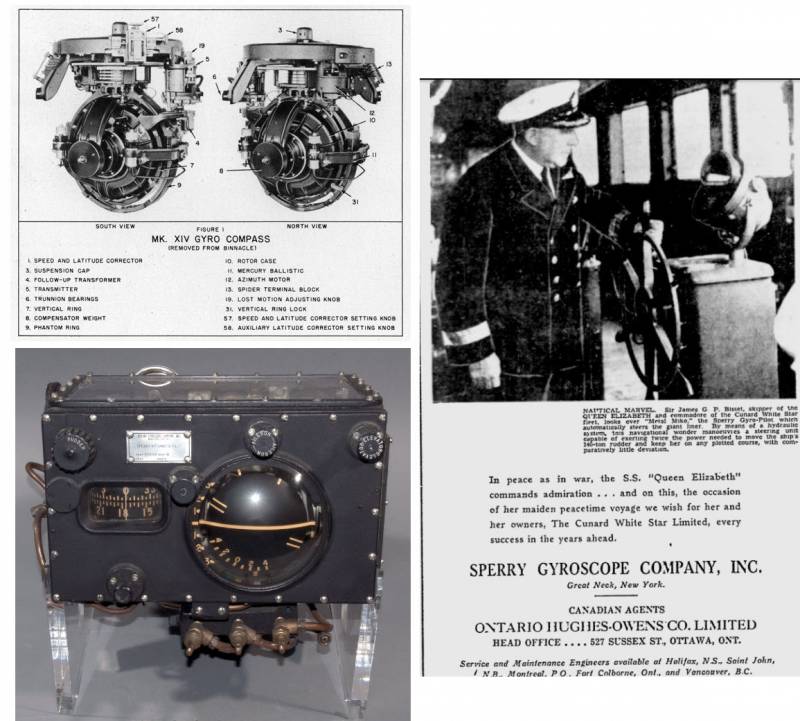
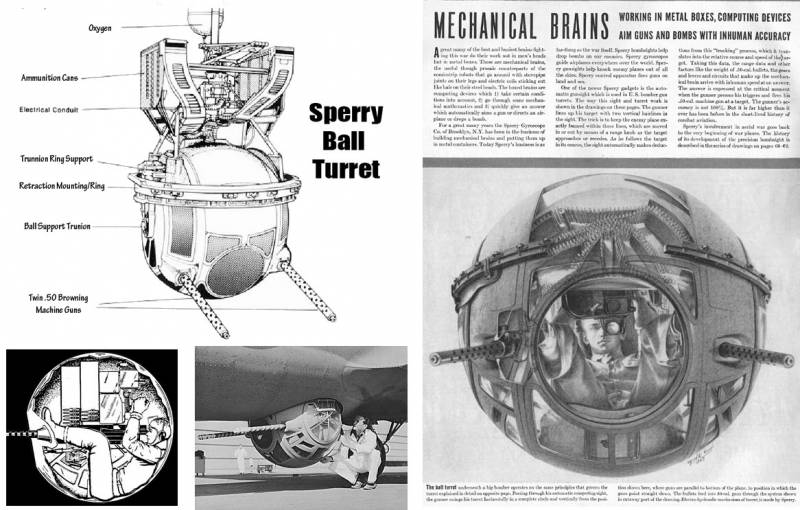
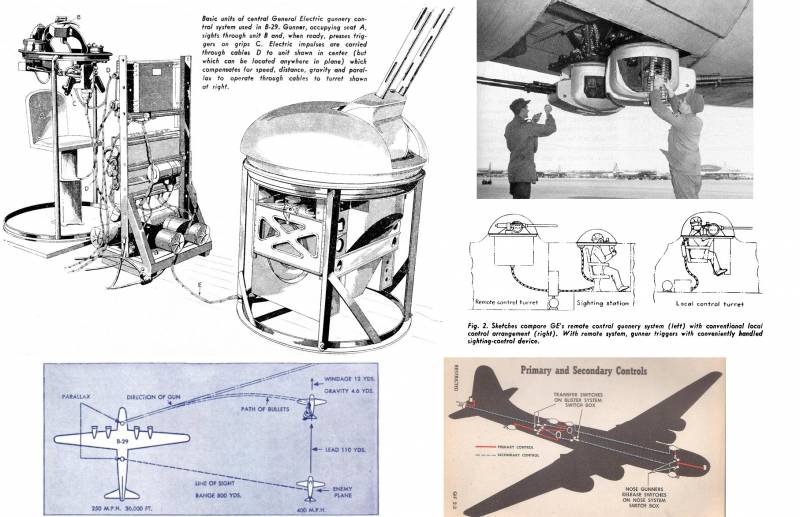

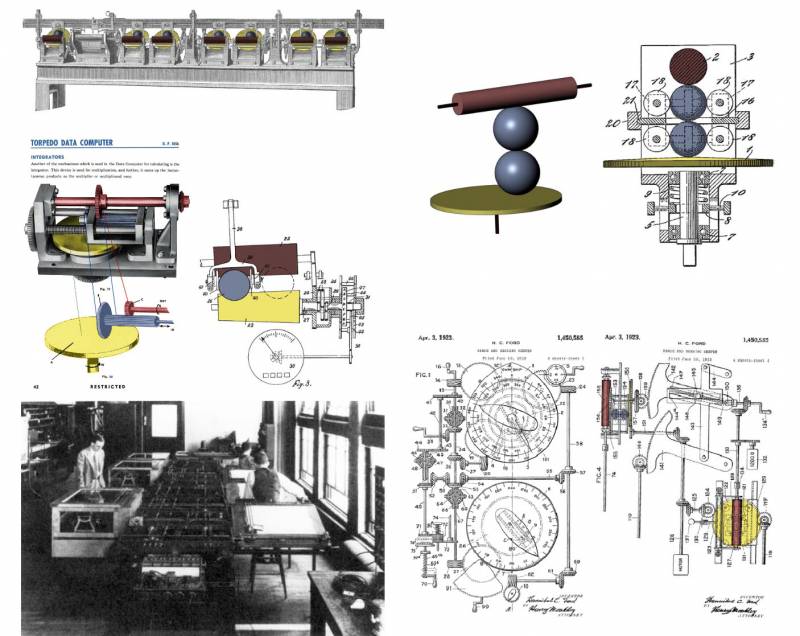
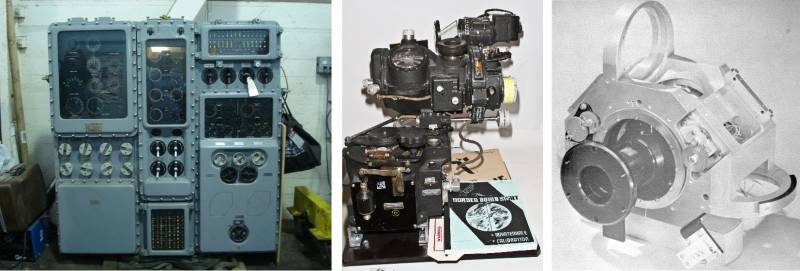
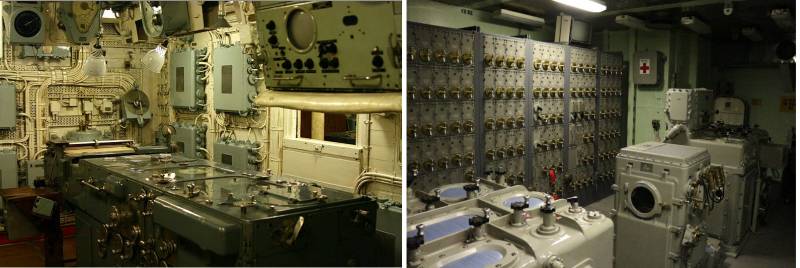
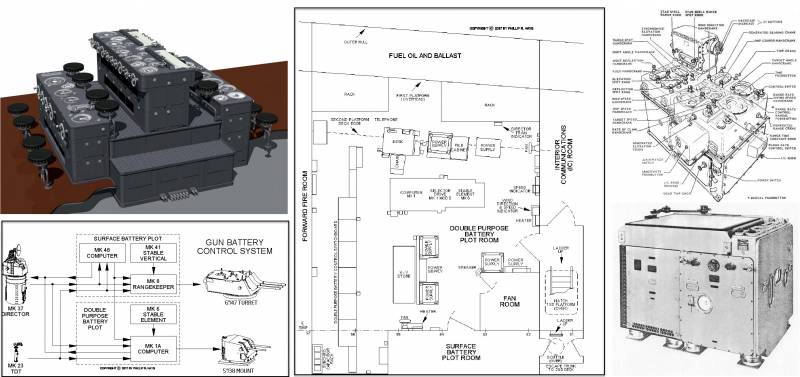
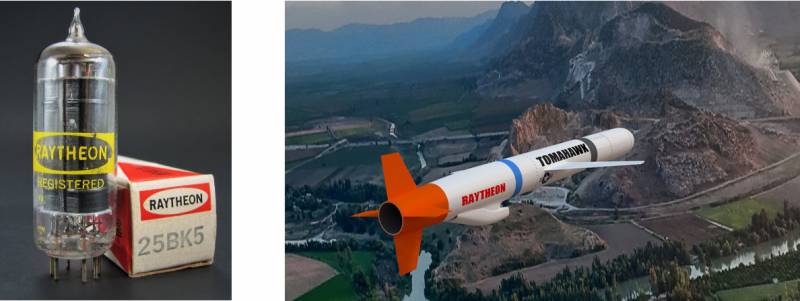
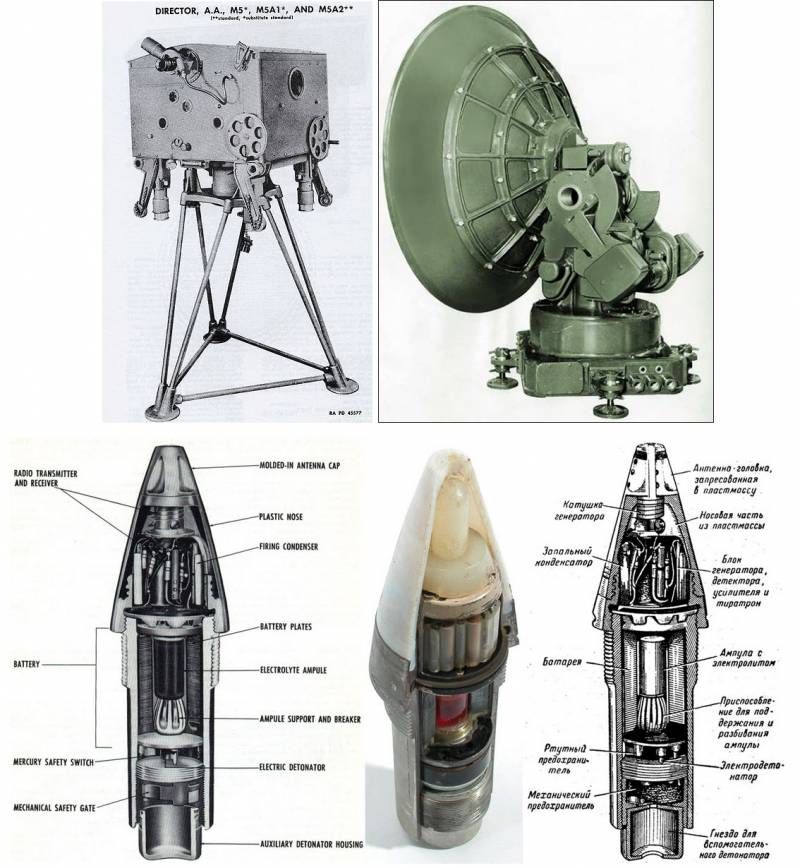
Information